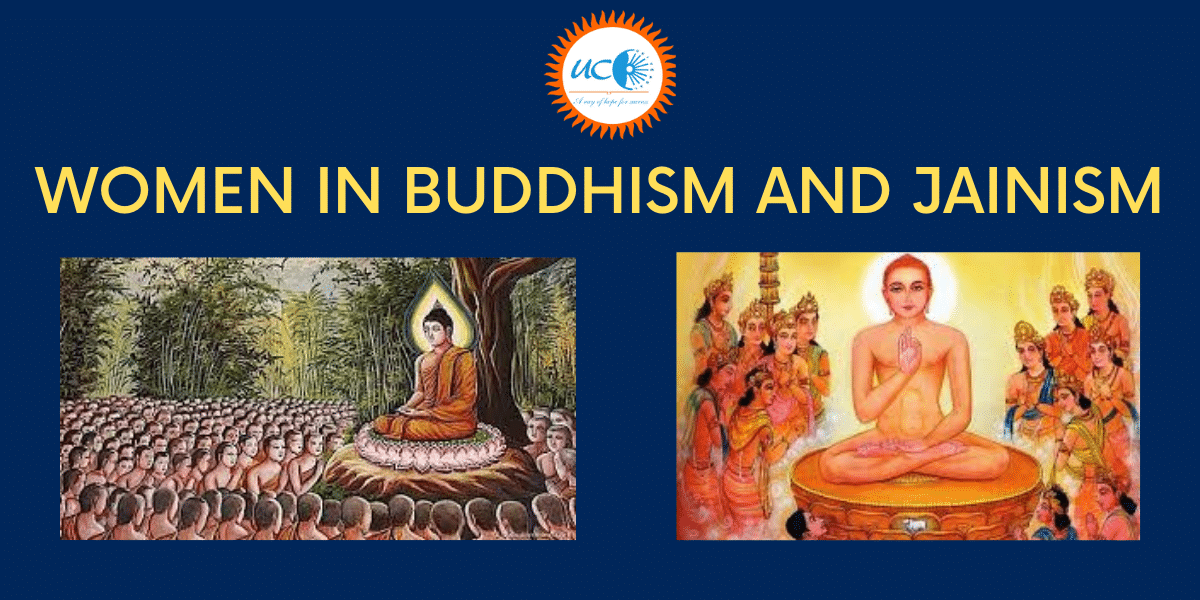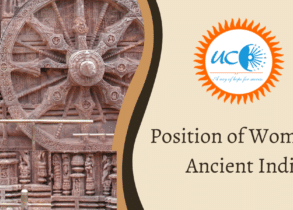Women in Buddhism and Jainism
The 6th century BCE in the Indian subcontinent was a dynamic period. It witnessed several changes that had long-lasting consequences.
- Firstly, the period witnessed the rise of territorial kingdoms known as Mahajanapadas.
- Secondly, the Indian subcontinent witnessed the rise of two philosophies; Buddhism and Jainism.
- Finally, the Vedic philosophies acquired a firm shape further entrenching into people’s social lives.
This essay will attempt to assess the position of women in the two heterodox philosophies Buddhism and Jainism during its early days.
Buddhism in its initial years asserted that Nibbana (highest goal) was possible for women and so created the Buddhist Sangha. But this assertion was not without disapproval.
The Buddhist texts reflect a contradictory picture; they represent the stereotypical understanding of women whose life was supposed to revolve around their husbands. The texts also reflected that women were inferior, sinful, and a source of contamination to men.
Buddha in the beginning was not ready to admit women into the Sangha. This episode is narrated in the Vinaya Pitaka (Discipline basket). It was only after persuasion by his Aunt Mahapajapati Gotami and disciple Ananda that Buddha agreed to admit women but added eight other harsh conditions to the nuns.
These included that if a nun even if she is ordained for 100 years will have to rise up from her seat and greet the monk, under no circumstance she has to abuse a monk, etc.
BUDDHISM
- Buddhist tradition also records that after the death of Buddha, when the compilation of Buddhist teachings was going on, Ananda was made to admit the discrepancies during Buddha’s life, one of which was admitting women in the Sangha.
- The Vinaya Pitaka also suggests the prediction of Buddha that since the Sangha has admitted women, the doctrine would decline in 500 instead of 1000 years.
- The doctrine also argued that though women can achieve salvation, their capability of attaining Buddhahood without being born as a man was not accepted.
- Despite these arguments, the literary shreds of evidence also suggest the contributions of women in early Buddhism. They contain several references to learned nuns.
- The Samyutta Nikaya refers to Khema who astonished King Prasenjit that he bowed to her.
JAINISM
- The sects of Jainism on the other handheld debate for more than a millennium over the position of women. The central debates were over the issue of whether women can achieve salvation and on clothing.
- Since the Digambara sect stressed giving up on clothing as it counted as a material possession, the question of women following nudity was a matter of concern.
- The female anatomy restricted women to undertake the rigorous ascetic life required by the Jaina monks. For the Shvetambaras, wearing or not wearing clothes was optional.
- The monks and nuns took the same vows and were on par with each other. Similar to the Buddhist Sangha, the Jaina order also practiced inequality. No matter how senior a nun was, she had to pay respect to a junior monk.
- On the debate over salvation, the Digambaras hold that a woman can achieve salvation only if she had been born as a male in one of the births. The Shvetambaras agree that women can achieve salvation.
- The question that arises in the mind of any present-day reader would be on how to assess these 6th-5th century BCE traditions? The general understanding that Buddhism and Jainism preached for equality can be contradicted.
- However, an anachronistic view of History would only do harm. These philosophies that took shape in 6th century India have to be assessed as per the social standards of that particular time.
- Despite the initial reluctance and strict norms for women, the heterodox philosophies opened up spaces for spiritual aspirations of women and the women in the Sangha were also responsible for the spreading of Buddhist and Jaina ideas among the common people.






